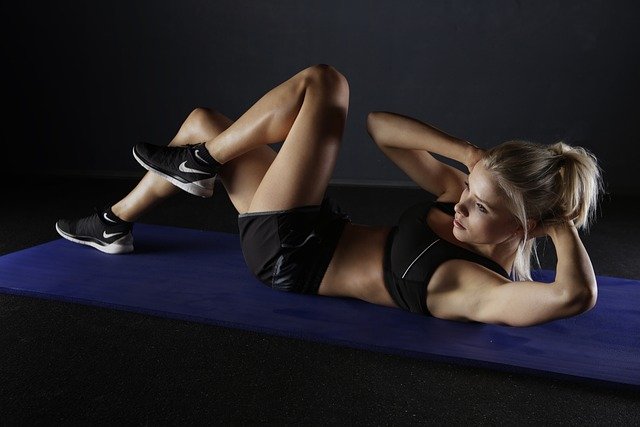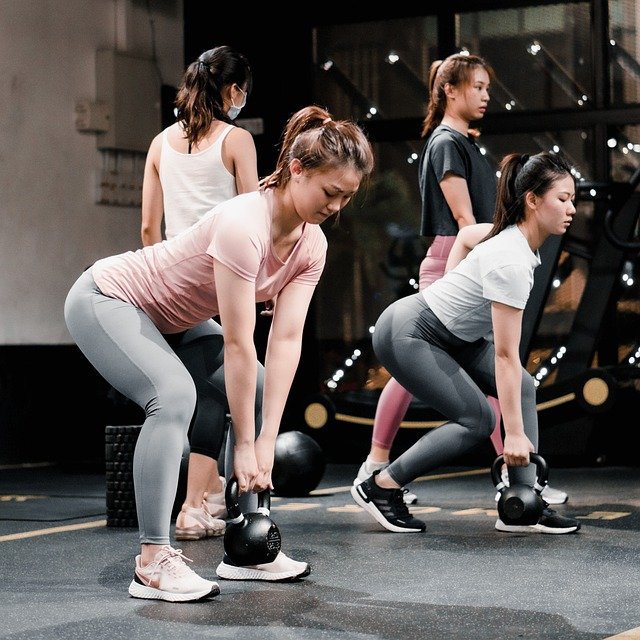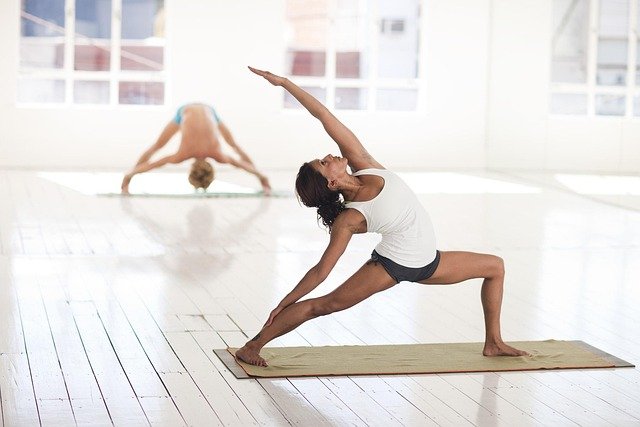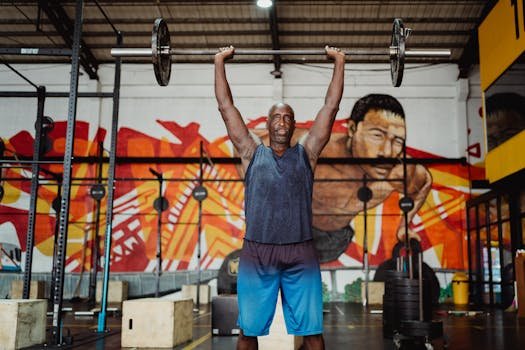We often focus on sweat and reps when it comes to health and fitness, but true well-being is a harmonious blend of physical and mental strength. Your mental state plays a powerful role in how you feel, perform, and live each day.
Why Mental Well-being Matters:
Fuels Your Fitness Journey: A positive mindset helps you stay motivated, overcome challenges, and consistently pursue your fitness goals.
Reduces Stress: Exercise is a fantastic stress reliever, and a calm mind helps you harness those benefits more effectively.
Improves Sleep: Good mental health contributes to better sleep patterns, which are vital for physical recovery and overall vitality.
Boosts Self-Esteem: Achieving fitness milestones, no matter how small, can significantly enhance your self-confidence and body image.
Simple Ways to Nurture Your Mental Well-being:
Mindful Movement: Pay attention to your body during workouts. Feel the burn, appreciate your strength, and embrace the moment.
Prioritize Sleep: Aim for 7-9 hours of quality sleep each night. Create a relaxing bedtime routine to help you wind down.
Practice Gratitude: Take a few moments each day to acknowledge things you’re thankful for. This simple act can shift your perspective.
Connect with Others: Share your journey, celebrate successes, and seek support from friends, family, or a fitness community.
Embrace Self-Compassion: Be kind to yourself on off days. Progress isn’t always linear, and setbacks are part of the journey.
Remember, a healthy body and a healthy mind go hand-in-hand. By prioritizing your mental well-being, you’re not just improving your fitness; you’re building a stronger, more resilient you.

Workout and Training: Building Your Foundation for Success
Transform Your Body, Transform Your Life!
Effective workout and training goes beyond just showing up to the gym – it’s about creating a structured approach that matches your goals, fitness level, and lifestyle. Whether you’re aiming to build muscle, lose weight, or improve overall health, consistency beats perfection every time.
The key is starting with basics: compound movements like squats, deadlifts, and push-ups that work multiple muscle groups efficiently. Progressive overload – gradually increasing weight, reps, or intensity – ensures continuous improvement. Recovery is equally important; muscles grow during rest, not just during workouts.
Remember, the best workout routine is one you’ll actually stick to. Find activities you enjoy, set realistic goals, and track your progress. Small, consistent efforts compound into remarkable transformations over time.




🏋️♀️ How to Start Weight Training as a Beginner: A Complete Guide
Starting weight training can feel intimidating, especially if you’re new to the gym or unsure how to begin. The good news? You don’t need fancy equipment or prior experience to get started. Whether your goal is to build muscle, lose fat, boost metabolism, or simply get stronger, weight training is one of the most effective ways to improve your overall health and fitness.
Here’s everything you need to know to begin your weight training journey with confidence.
What Is Weight Training?
Weight training (also called strength training or resistance training) involves using resistance—like dumbbells, barbells, machines, or your own bodyweight—to build muscle strength, endurance, and size.
It isn’t just for bodybuilders. Weight training offers benefits for people of all ages and fitness levels, including:
- 🔥 Boosted metabolism (you burn more calories at rest)
- 💪 Increased muscle strength and tone
- 🦴 Improved bone density and joint health
- 🧠 Better mood and mental clarity
- 🚀 Enhanced daily function and injury prevention
🧭 Getting Started: Beginner-Friendly 6teps
1. Set Clear Goals
Are you training to lose weight, gain strength, build muscle, or improve your general health? Knowing your “why” helps shape your routine and help you stay motivated.
2. Learn Proper Form
Form comes first. Start with bodyweight movements or light weights and focus on mastering technique. Good form prevents injury and ensures you’re targeting the right muscles.
💡 Tip: Use a mirror, record yourself, or get feedback from a trainer or knowledgeable friend.
3. Start with a Simple Routine
As a beginner, stick to full-body workouts 2–3 times per week. Focus on compound exercises—movements that work multiple muscle groups at once.
Sample Beginner Routine:
- Squats (bodyweight or goblet) – 3 sets of 10
- Push-ups (or incline) – 3 sets of 8–12
- Dumbbell Rows – 3 sets of 10
- Glute Bridges – 3 sets of 12
- Plank – 3 rounds of 20–30 seconds
4. Choose the Right Weight
Select a weight that challenges you without compromising form. The last 2–3 reps should feel tough but doable.
✅ If it’s too easy, go heavier.
❌ If your form breaks, reduce the load.
5. Rest and Recover
Rest is when the magic happens. Allow at least one full rest day between weight training sessions and aim for 7–9 hours of sleep each night.
Also, prioritize protein-rich foods to support muscle repair and growth.
6. Track Your Progress
Keep a workout log or use a fitness app to record your sets, reps, and weights. This helps you see improvement over time and stay consistent.
7. Stay Consistent and Patient
Progress takes time. Focus on consistency over perfection. Celebrate small wins like lifting a little more, improving form, or showing up on tough days.
Final Thoughts
Weight training is one of the most empowering habits you can build. It can truly change your life—physically and mentally. You don’t need to be an expert, and you don’t have to lift heavy from day one. It’s about building a habit, learning your body, and committing to your health. Start where you are, stay consistent, and trust the process.
You’ve got this. Start small, stay consistent, and your strength will gbmrow—one rep at a time. 💥






How Different Types of Exercise Can Transform Your Mental Health
We’ve all heard that exercise is good for us, but if you’ve ever finished a workout feeling like you could conquer the world, you know there’s something almost magical happening beyond just physical fitness. The truth is, different types of exercise affect your mind in beautifully unique ways, and understanding these differences can help you choose the movement that gives you exactly what you need on any given day.
Why Exercise Is Medicine for Your Mind
Before diving into specific types of exercise, let’s talk about what’s actually happening in your brain when you move your body. Exercise triggers the release of endorphins – those famous “feel-good” chemicals that create a natural high. But that’s just the beginning.
When you exercise, your brain also produces more BDNF (brain-derived neurotrophic factor), which is like fertilizer for your brain cells. It helps create new neural connections and protects existing ones. You’re literally growing a healthier, more resilient brain with every workout.
Exercise also reduces cortisol, your primary stress hormone, while increasing levels of serotonin and dopamine – neurotransmitters that regulate mood, motivation, and feelings of well-being. It’s like having a pharmacy in your sneakers.
Cardio: The Ultimate Stress Reliever
There’s something almost primal about running, cycling, or dancing that just melts stress away. Cardiovascular exercise is your go-to when life feels overwhelming.
What It Does for Your Mind Cardio is incredibly effective at reducing anxiety and depression. That rhythmic, repetitive motion has a meditative quality that helps quiet the mental chatter. Many people find that their best problem-solving happens during a long walk or run – it’s like your subconscious gets to work while your conscious mind takes a break.
The Sweet Spot You don’t need to run marathons to get these benefits. Even 20-30 minutes of moderate cardio can shift your entire day. The key is finding that zone where you can still hold a conversation but feel like you’re working. That’s where the magic happens.
When to Choose Cardio
- You’re feeling anxious or overwhelmed
- Your mind is racing and you can’t seem to settle down
- You need to process emotions or work through a problem
- You want that classic “runner’s high” mood boost
Real Talk: If you hate running, don’t run. Dance in your living room, take a brisk walk while listening to a podcast, or try swimming. The best cardio is the kind you’ll actually do consistently.
Strength Training: Building Mental Resilience
There’s something deeply satisfying about lifting heavy things and putting them down. Strength training doesn’t just build physical muscle – it builds mental toughness and confidence in ways that surprise many people.
What It Does for Your Mind Strength training is incredible for building self-efficacy – that belief that you can handle whatever life throws at you. Every time you lift a weight that felt impossible last month, you’re proving to yourself that you’re capable of growth and change. This confidence spills over into every area of life.
The focused concentration required during strength training also acts as a form of moving meditation. When you’re focused on proper form and counting reps, there’s no room for worrying about your to-do list or replaying that awkward conversation from yesterday.
The Empowerment Factor Many people, especially women, report feeling more confident and assertive after incorporating strength training into their routine. There’s something empowering about knowing you can carry your own groceries, move furniture, or simply feel strong in your own body.
When to Choose Strength Training
- You’re working on building confidence or self-esteem
- You need to feel more grounded and centered
- You want to channel frustration or anger into something productive
- You’re dealing with feelings of powerlessness in other areas of life
Getting Started: You don’t need a gym membership or fancy equipment. Bodyweight exercises, resistance bands, or even household items can provide an effective strength workout.
Yoga: The Mind-Body Reset
Yoga gets a lot of attention for flexibility, but its real superpower is the way it calms your nervous system and helps you reconnect with your body and breath.
What It Does for Your Mind Yoga activates your parasympathetic nervous system – your body’s “rest and digest” mode. This is the opposite of the fight-or-flight response that so many of us live in chronically. Regular yoga practice can literally rewire your stress response, making you more resilient to daily pressures.
The combination of breath work, gentle movement, and mindfulness creates a perfect storm for mental clarity and emotional regulation. Many people find that yoga helps them respond to stress rather than react to it.
The Mindfulness Connection Unlike other forms of exercise where you might zone out or distract yourself, yoga asks you to tune in. You notice how your body feels, where you hold tension, and how your breath changes with different movements. This body awareness often translates to better emotional awareness in daily life.
When to Choose Yoga
- You’re feeling disconnected from your body
- You need help managing stress or anxiety
- You want to improve your ability to stay present
- You’re recovering from injury or dealing with chronic pain
- You need gentle movement on low-energy days
Different Styles for Different Needs: Gentle or restorative yoga is perfect for stress relief, while more vigorous styles like vinyasa or power yoga can provide both physical challenge and mental clarity.
High-Intensity Interval Training (HIIT): The Confidence Booster
HIIT might seem intimidating, but it’s actually one of the most efficient ways to boost both your fitness and your mood. The short bursts of intense effort followed by recovery periods mirror life’s challenges and can build serious mental resilience.
What It Does for Your Mind HIIT is incredibly effective at building mental toughness. When you push through that moment where your body wants to quit but you keep going, you’re training your brain to persist through discomfort. This skill transfers surprisingly well to other challenging situations in life.
The format also provides a sense of accomplishment in a short amount of time. Completing a 20-minute HIIT workout can give you that “I can do anything” feeling that lasts for hours.
The Adrenaline Effect The intensity of HIIT triggers a controlled stress response that can actually help you handle real-life stress better. It’s like practicing being uncomfortable in a safe environment.
When to Choose HIIT
- You’re short on time but need a mood boost
- You want to build mental toughness and resilience
- You’re feeling stuck or unmotivated
- You need to burn off intense emotions or energy
Making It Work: HIIT can be adapted to any fitness level. The key is working at your own maximum effort, not comparing yourself to others.
Walking: The Underrated Mental Health Hero
Never underestimate the power of a good walk. It might seem too simple to be effective, but walking, especially in nature, is one of the most accessible and powerful tools for mental health.
What It Does for Your Mind Walking, particularly at a leisurely pace, activates the same brain networks involved in creativity and problem-solving. It’s during gentle, rhythmic movement that many people have their best ideas or work through emotional challenges.
Research shows that walking in nature can reduce rumination – that tendency to get stuck in negative thought loops. There’s something about the combination of gentle movement and natural surroundings that helps reset your mental state.
The Social Connection Walking with a friend or family member adds another layer of mental health benefits. The side-by-side movement often makes it easier to have meaningful conversations, and the shared activity strengthens relationships.
When to Choose Walking
- You need to clear your head or think through a problem
- You’re feeling overwhelmed and need gentle movement
- You want to connect with a friend or family member
- You’re new to exercise or recovering from illness
- You need fresh air and a change of scenery
Team Sports and Group Fitness: The Social Connection
Humans are social creatures, and exercising with others can provide mental health benefits that solo workouts simply can’t match.
What It Does for Your Mind Group exercise combats loneliness and builds community. The shared experience of working toward a common goal or supporting each other through a challenging workout creates bonds and provides accountability.
There’s also something powerful about moving in sync with others. Whether it’s a dance class, rowing team, or pickup basketball game, synchronized movement can create a sense of belonging and shared purpose.
The Fun Factor Group activities often feel less like “exercise” and more like play. This can be especially helpful for people who struggle with motivation or have negative associations with working out.
When to Choose Group Exercise
- You’re feeling isolated or lonely
- You need motivation and accountability
- You want to meet new people with similar interests
- You’re competitive and thrive on friendly competition
- You find solo workouts boring or difficult to stick with
Finding Your Perfect Match
The beautiful thing about exercise and mental health is that there’s no one-size-fits-all solution. Your perfect workout might change based on your mood, energy level, or what’s happening in your life.
Some days you might need the meditative rhythm of a long walk. Other days, you might need to lift heavy weights to feel strong and capable. Sometimes you need the community of a group fitness class, and other times you need the solitude of a solo run.
Listen to Your Body and Mind Start paying attention to how different types of exercise make you feel, both during and after. Do you feel energized or calm? Confident or centered? Clearheaded or emotionally released? This awareness will help you choose the right movement for what you need.
Start Where You Are You don’t need to be in perfect shape to start experiencing the mental health benefits of exercise. Even five minutes of movement can shift your mood. The key is consistency, not intensity.
Mix It Up Having a variety of exercise options in your toolkit means you can match your workout to your mental state. Think of different types of exercise as different tools in your mental health toolbox.
The Bottom Line
Exercise isn’t just about changing how you look – it’s about changing how you feel, think, and show up in the world. Whether you’re dealing with stress, anxiety, low mood, or just want to feel more confident and resilient, there’s a type of movement that can help.
The most important thing is to start somewhere and be consistent. Your future self will thank you for every single workout, no matter how small or imperfect. Because at the end of the day, the best exercise for your mental health is the one you’ll actually do.



Mindful Walking: Your Simple Path to Calm
In our fast-paced world, stress often feels like an unavoidable companion. We juggle deadlines, responsibilities, and an endless stream of information, leaving us feeling overwhelmed and disconnected. While complex mindfulness practices can seem daunting, there’s a remarkably simple, accessible antidote right outside your door: mindful walking.
Mindful walking isn’t about covering distance or burning calories, though those are welcome side effects. It’s about consciously engaging your senses and your present moment awareness while you move. Instead of letting your mind race through your to-do list or replay past conversations, mindful walking invites you to anchor yourself in the now. It’s a moving meditation, transforming an everyday activity into a powerful tool for stress reduction and mental clarity.
How Does It Relieve Stress?
The benefits of mindful walking for stress relief are multifaceted:
- Calms the Nervous System: Focusing on sensory input and your breath activates your parasympathetic nervous system, the “rest and digest” system, counteracting the “fight or flight” response triggered by stress.
- Reduces Rumination: By directing your attention to your surroundings and internal sensations, you interrupt the cycle of overthinking and worrying that often accompanies stress.
- Connects You to Nature (if outdoors): Spending time in natural environments has been scientifically proven to lower cortisol levels, improve mood, and enhance overall well-being.
- Boosts Mood: Physical activity, even gentle walking, releases endorphins, natural mood lifters. When combined with mindfulness, this effect is amplified.
How to Practice Mindful Walking: A Step-by-Step Guide
Ready to give it a try? You don’t need special equipment or a specific destination.
- Choose Your Environment: A park, your neighborhood sidewalk, even a long hallway can work. The key is to minimize major distractions initially.
- Set Your Intention: Before you start, take a moment to decide that this walk is for presence and calm, not speed or errands.
- Tune into Your Senses (one by one):
- Sight: Notice the colors, shapes, and textures around you. Observe individual leaves, the pattern of clouds, or interesting architectural details.
- Sound: Listen to the birds chirping, the rustle of leaves, distant traffic, or your own footsteps. Acknowledge each sound without judgment.
- Smell: Are there flowers, damp earth, freshly cut grass, or a distant scent of coffee?
- Touch/Feel: Pay attention to the sensation of your feet connecting with the ground – the pressure, the roll from heel to toe. Feel the air on your skin, the warmth of the sun, or the coolness of a breeze.
- Notice Your Breath: Without trying to change it, simply observe the rhythm of your breath as you walk. Is it shallow or deep? Fast or slow?
- Observe Thoughts Without Judgment: Your mind will wander. When it does, gently acknowledge the thought (“Ah, there’s a thought about my grocery list”) and then kindly bring your attention back to your senses or your breath. Don’t criticize yourself; simply redirect.
- Pace Yourself: Walk at a comfortable, unhurried pace that allows you to be aware.
- Duration: Even 10-15 minutes of mindful walking can make a significant difference. As you become more comfortable, you can extend the time.
Mindful walking is a simple yet profoundly effective practice for anyone seeking a natural way to reduce stress and cultivate inner peace. It’s a reminder that true well-being isn’t found in grand gestures, but often in the quiet, intentional moments we create for ourselves, one mindful step at a time. So, next time you step out, try walking with intention and rediscover the calm within you.
